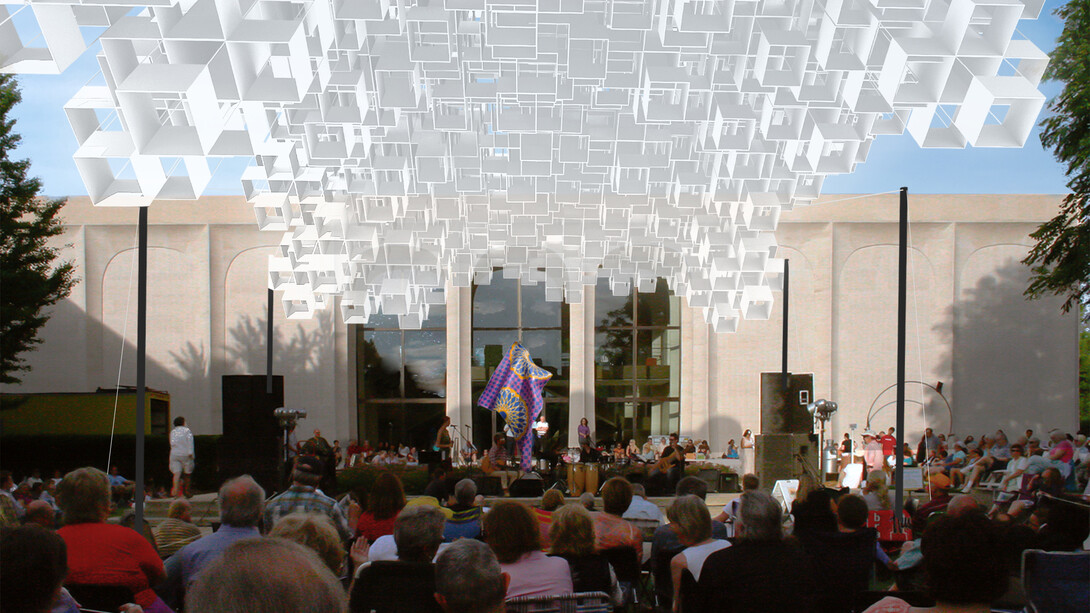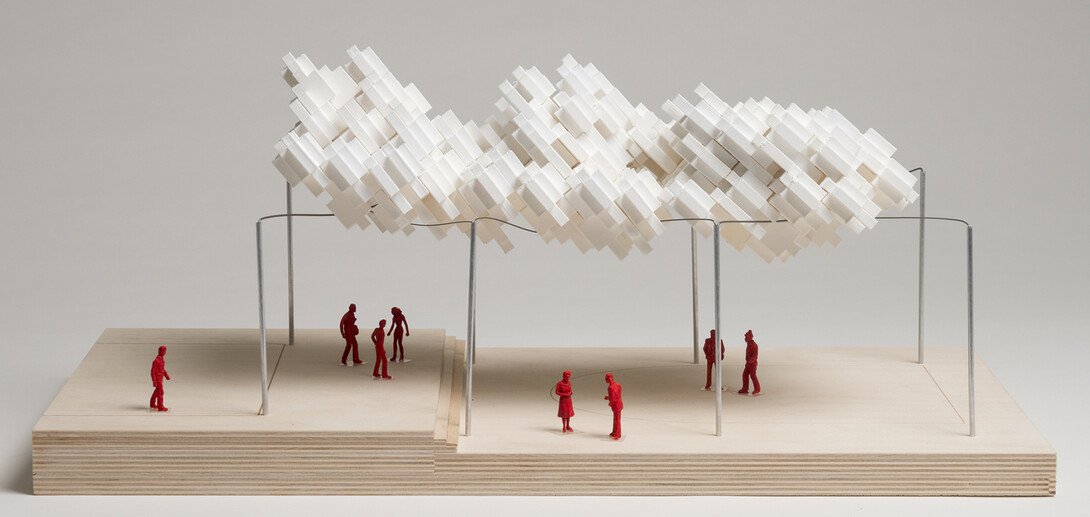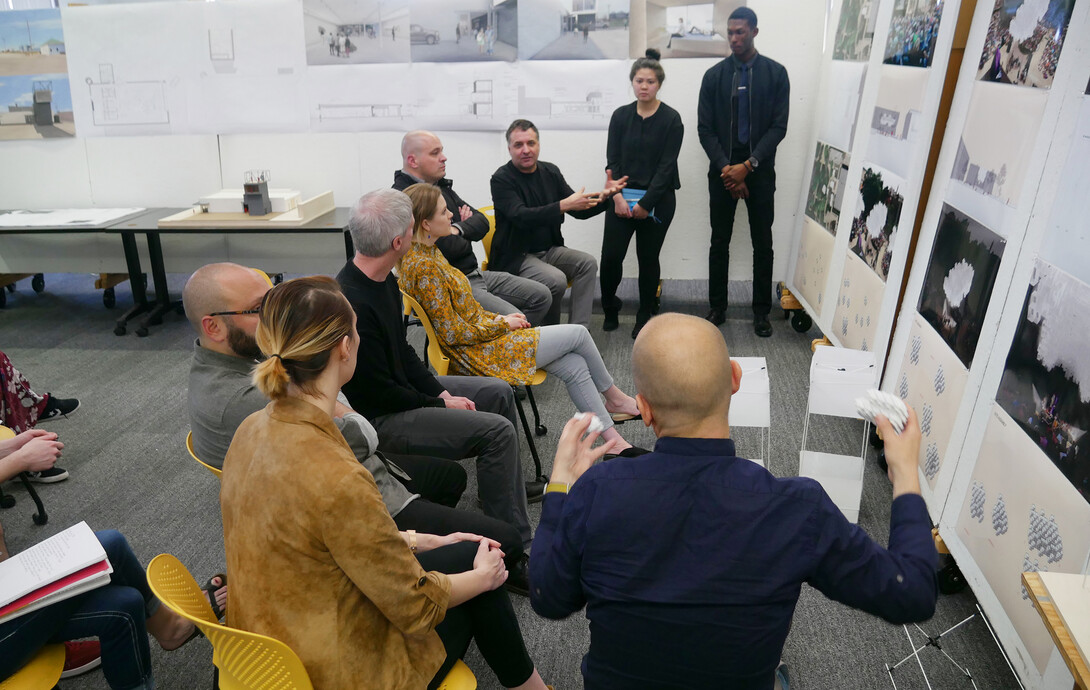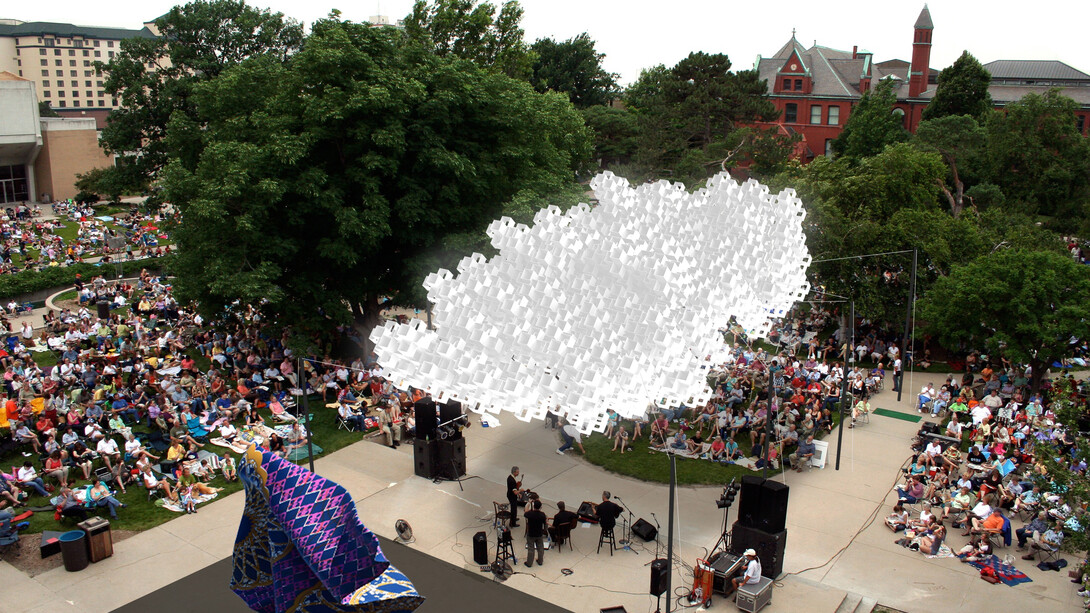
The sultry sounds of Jazz in June may mingle with an extra bit of shade in 2019.
Organizers of the University of Nebraska–Lincoln performance series are collaborating with architecture students and faculty to design a canopy that will float over the stage and nearby VIP seating area.
As proposed, the canopy will resemble an assemblage of box kites floating about 15 feet above the performance area. The structure will be an estimated 55 feet by 25 feet and consist of an estimated 2,000 box kites articulated together to form a shade-producing cover.

The project has evolved out of necessity to protect performers and audience members, providing a break from the steamy rays of a setting summer sun in Nebraska. The canopy would also help keep instruments from getting direct sun and possibly going out of tune, make the performance opportunity more attractive to national performers, and encourage crowds to stay longer despite the sticky weather.
“After working several Jazz in June events, you realize that it can be freakishly hot at night in Nebraska and we really need to do something to protect the performers,” said Erin Poor, education and community engagement director for the Lied Center for Performing Arts. “We’ve been talking about the concept for some time.”
During the 2017 season, organizers rented event tents to provide shade during an extremely hot performance by Terence Blanchard. While functional, the tents diminished the festive nature of the concert, so Poor and Spencer Munson, coordinator of the concert series, moved forward with finding a different option.
Reaching out to Jeffrey L. Day, professor of architecture, the concert organizers floated the idea of creating a student design challenge to produce shade structure concepts for the 2019 Jazz in June season. Day embraced the design-build project and integrated it into his Fabrication and Construction Team design-research studio. Offered to graduate students, the FACT studio works with non-profit clients to develop, design and build actual projects.
Poor presented the challenge to the students at the start of the spring semester, reinforcing the idea that the canopy needed to be more than just a shade structure.
“With Spencer elevating the artistry and level of performers who come to the festival, we wanted to bring a new element that would complimented this new style and help the festival grow and develop,” Poor said. “We want an event that not only has innovative music but also innovative art and architecture.”

Master of architecture students developed several designs before settling on the kite-cloud concept. The studio spent the majority of the spring semester creating schematic designs and models.
The final design has been unanimously approved by the university’s aesthetic review committee and Sheldon officials. Now, the team is working with the university to finalize technical and safety details of the proposed installation — which will be used exclusively for Jazz in June concerts.
“Once everything is resolved there will be a few days of off-site fabrication, installation of the anchors and poles, and then installation of the actual kites should only take a few hours,” said Day.
Jazz in June organizers are currently working to secure funding for the canopy. Donations can be made by contacting Munson at spencermunson@gmail.com or the University of Nebraska Foundation.
The “Kite Cloud” structure is intended to last for two concert seasons. Jazz in June collaborators, which include the university, Lied Center for Performing Arts and Sheldon Museum of Art, would like to turn the artsy canopy installation to become a biennial contest open to the public.








